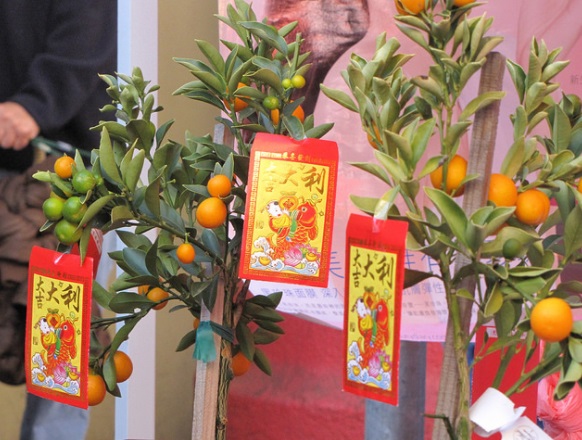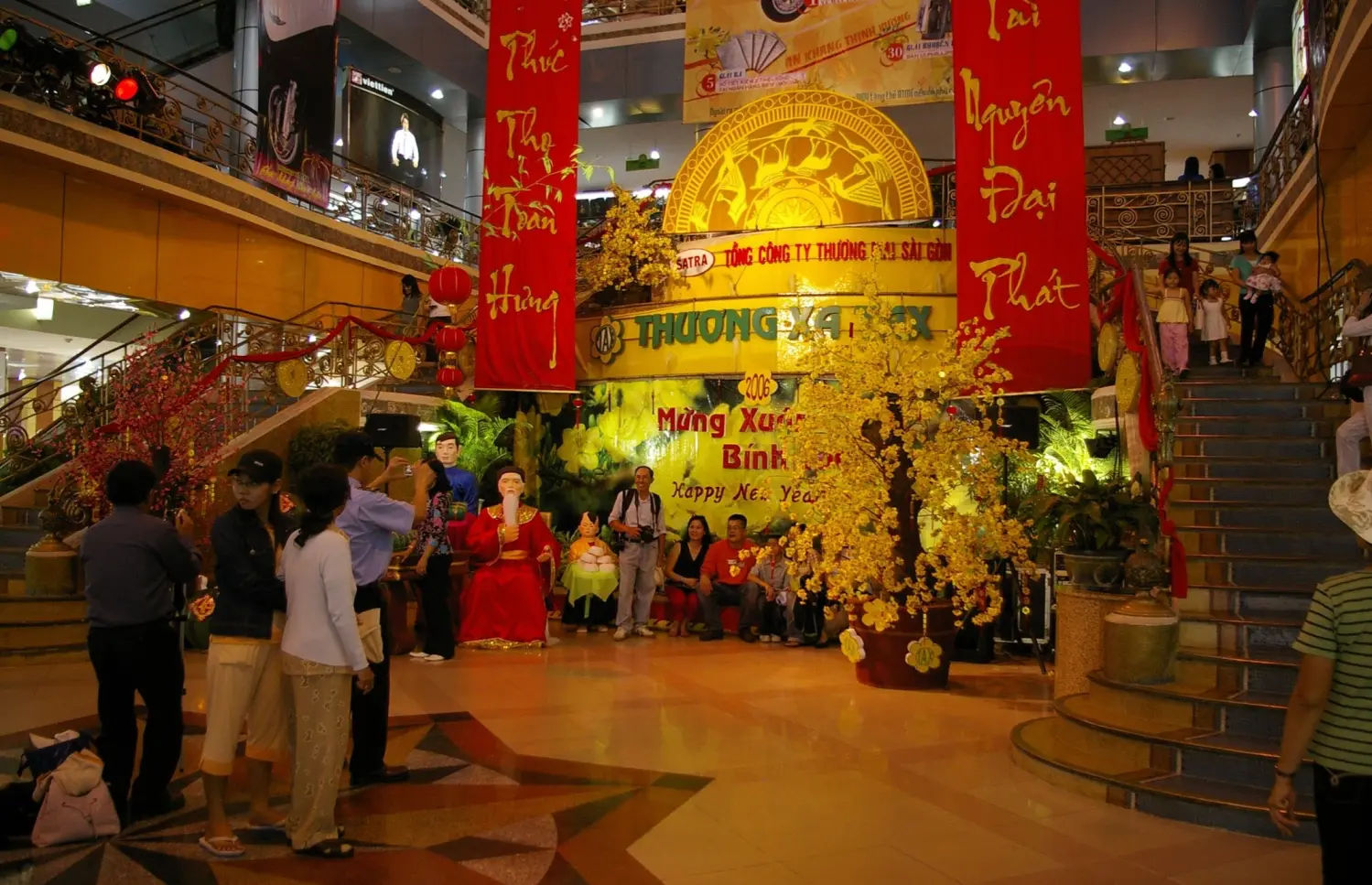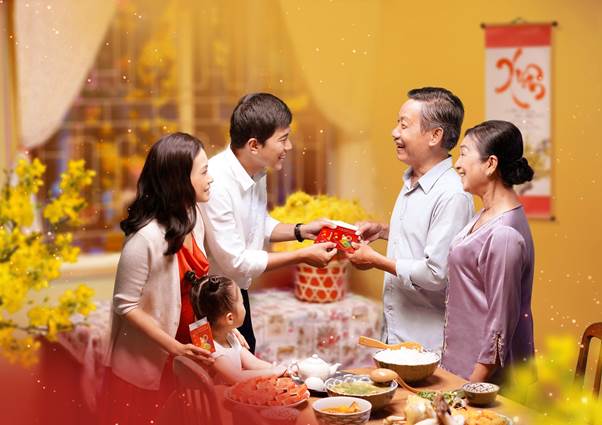Tết, or Vietnamese Lunar New Year, is the most important holiday in Vietnam. Families clean their homes, cook traditional food, and gather to welcome the new year together. People give lucky money, visit relatives, and enjoy colorful festivals in every city and village. Moreover, Tết is a time to remember ancestors and start fresh with hope and good wishes. In this guide, you’ll learn what Tết means, how it’s celebrated, and what to expect if you visit Vietnam during this special time.
What Is the Vietnamese Lunar New Year (Tết)?
The word “Tết” comes from a Sino-Vietnamese term called “Tiết”, which means “the union of a bamboo star” or, more freely, “the beginning of the year.” This name reflects the seasonal transition that often brings changes in weather—like rain, fog, or heat—paired with rituals and celebrations. Vietnam observes several types of Tết throughout the year, such as the Mid-Autumn Tết and Cold Food Tết, but the most significant one is Tết Nguyên Đán, the Vietnamese Lunar New Year.
- Check out lucky money given during tet
The Vietnamese New Year (Tết), marks the beginning of the Lunar New Year and stands as the most important holiday festival in Vietnam. People celebrate it from the first to the third day of the lunar month, a period that typically aligns with the zodiac sign Aquarius in the Western calendar.
On Tết, Vietnamese families gather to visit loved ones and temples. They prepare and enjoy special dishes that are unique to the holiday. The celebration also marks the start of spring in Vietnam, adding fresh energy to the season. A decorated New Year tree plays a meaningful role in the festivities. During the holiday, people avoid cleaning, since sweeping the house is believed to remove good luck and happiness.
Tết, reflects the heart of Vietnamese cultural identity. As the country’s most important festival, Tết plays a key role in preserving and celebrating national traditions. While January 1st is also recognized as New Year’s Day, most Vietnamese focus their celebrations on Tết, which holds deeper cultural meaning and stronger emotional ties.
When Is the Vietnamese Lunar New Year (Tết) Date
As we know, each new year date is slightly different. So. the Tết follows the first new moon of the lunar calendar, which naturally shifts every year between late January and mid-February. These dates reflect the first lunar day of the Vietnamese lunar month.
- 2025: Wednesday, January 29 (Year of the Snake)
- 2026: Tuesday, February 17 (Year of the Horse)
- 2027: Saturday, February 6 (Year of the Goat)
- 2028: Wednesday, January 26 (Year of the Monkey)
- 2029: Tuesday, February 13 (Year of the Rooster)
- 2030: Saturday, February 2 (Year of the Dog)
| Year | Date | Zodiac Animal |
|---|---|---|
| 2025 | January 29 | Snake |
| 2026 | February 17 | Horse |
| 2027 | February 6 | Goat |
| 2028 | January 26 | Monkey |
| 2029 | February 13 | Rooster |
| 2030 | February 2 | Dog |
Tết Traditions and the Spirit of Renewal
The Vietnamese New Year also marks the first day of spring, symbolizing rebirth and renewal—similar to the spirit found in Easter celebrations. During this season of fresh beginnings, Vietnamese people feel a deep sense of renewal within themselves. As a result, they follow meaningful customs meant to set the tone for the coming year.
Every action during the first three days of Tết should reflect good intentions, as these actions are believed to shape the next twelve months. People avoid dishonesty, negative speech, and conflict. Even the most quarrelsome family members make peace—mothers-in-law reconcile with daughters-in-law, and arguing couples settle their differences.
Children promise to behave well, and adults reward them with small gifts—usually coins wrapped in red paper, the color of good fortune. Kids also receive new clothes and give alms to those in need. This symbolic “New World” is meant to reflect the best version of society. Once the quiet, sacred days of celebration end, life begins anew with joy and energy. The days that follow include special ceremonies like the “stamp celebration” for government workers, the “feather sponge celebration” for students, and others for merchants. For Vietnamese people, Tết is a time rooted in hope, human connection, and trust in a brighter future.
Traditional Customs During the Vietnamese Lunar New Year (Tết)
Cleaning the house with decorating
Before the Tet, the houses are often brought to a high gloss and are decorated and decorated. The children have the authority over the mopping and scrubbing of the soil. The kitchen must be clean before the 23rd night of the last month.
As a tradition, the household chair frees the ancestral tale of dust and ashes (of incense sticks). It is a widespread belief that the house cleaning spoils the bad luck of the old year. Some people paint their house and decorate it with festive decorations.
New clothing
This is often the most exciting part of the Vietnamese New Year for the children. Usually, parents purchase new clothes and shoes for their children a month before the New Year’s festival. However, the children are allowed to wear their new clothes only from the first day of the festival. The best wardrobe is always on the first day of the year.
Farewell party for the kitchen god (Ong Tao)
Seven Days (the 23rd Night of the Last Moon Month) Before Tet, each Vietnamese family offers a farewell party for the Ong Tao to get to the Heavenly Palace. His task is to report to the Jade Emperor about the events of the last year, which were carried out in the family.
The last day of the year
Literally translated, the festival means “Journey from Old to New Year”. A common belief among the Vietnamese people is that there are twelve Sacred Animals of the Zodiac, who observe and control events on Earth. On Giao Thừa, the last day of the year, the old zodiac head (in 2000, the dragon) ends his reign and hands over power to the new head (in 2001, the serpent). So, Giao Thua is the time for Ong Tao (the kitchen god) to return to Earth after reporting to the Jade Emperor. Every family should hold a free-lance ceremony to welcome him back to their kitchen.
The aura of the earth
Giao Thua is the holiest time of the year. That is why the first guest who sends his greetings is of particular importance. If this guest has a good aura (respected, educated, successful, famous, etc.), the family believes that they will have happiness and abundance throughout the year. This belief in the “xong dat” still exists today, especially in families that run a business.
Apricot and peach blossoms
Flower buds and blossoms symbolize a new beginning. These specific plants are strongly in demand during Tet. Hoa Mai, the yellow apricot blossoms, often bloom in South Vietnam. They thrive in the region’s hot climate, and Vietnamese families commonly choose them as the main flower for Tết celebrations. Hao Dao, this is the warm pink color of the peach blossom, which matures particularly well in the dry, cold weather of the north. Tet would not be Tet without Hai Mai or Hao Dai, which decorate the houses.
Red gift wraps
This is a tradition that has been preserved for generations. The red envelopes symbolize happiness and wealth. In the days of the New Year festival you often see elderly people who give sealed red envelopes to younger ones. Before the younger ones receive their envelope, however, they must present a certain greeting. Here, for example, a greeting that would be paid to a teacher:
“Thua thay, nam moi, con xin kinh chuc thay duoc doi giau suc khoe va gia dinh to khang thing vuon!” (“Revered Teacher, I wish you this New Year, With respect, severity and health, and to your family that she may live in peace and prosperity. “) – In return, the older gives good advice and wisdom, encourages the younger to maintain his school success, live harmoniously with others, and obey his parents. People also call this welcoming ritual and Lì Xì “Mừng Tuổi,” as it honors achievements gained over another year of life.
Gifts for the ancestors
People hold this ceremony on the first day of the New Year festival, before noon. The board of directors is holding the ritual (offering food, wine, cakes, fruits and incense sticks) to invite the souls of the ancestors to attend the family celebration. During this time the families honor the souls of their ancestors and demonstrate their prosperity.
The house / society decoration for the lunar new year
- Families prepare a table with five different fruits on the ancestral altar during every New Year’s feast in Vietnamese homes.
- Peach Blossoms: Each New Year, every household in the main town piles a large supply, but at least a small bundle of peach blossoms to decorate the house.
- Parallelism: This plays a major role in Vietnamese literature – in prose and lyric. He governs a particular genre, the genre of parallelism.
- The New Year tree: This is the part of a bamboo, five or six yards long, which is naked except for a small head at the top. Near the head is a round bamboo frame with some small fishes and small bells made of clay and sound softly in the wind. Under the framework are dedications and some thorny branches. At the top of the tree is a small kerosene lamp, which shines all night.
- People use traditional Tết prints to promote Vietnam’s cultural history and pass them down to younger generations through storytelling at the start of each new moon.

The lunar new Year’s Food
One of the most traditional Vietnamese foods for Tết, the Lunar New Year, is Bánh Chưng, a sticky rice cake. As the name suggests, Bánh Chưng includes sticky rice, pork, and green beans. Cooks wrap each portion in a special leaf called lá dong. Preparing Bánh Chưng takes care and precision at every step. People soak the rice and green beans for a full day beforehand to make them stickier. They marinate the pork in black pepper for several hours. Finally, they shape the cakes into squares and tie them tightly with strips of bamboo.

Forming requires skilled hands. Banh Chung, among other foods, is indispensable at the altar of ancestors during Tet. The Banh Chung family used to prepare the hot fire place one or two days before Tet. Parents often told their children fairytales. Nowadays, families living in the villages still live in front of Tet Banh Chung, but the people of the cities no longer. Since they often lack the time, they rather buy the food in the shops.




You May Also Like
Vietnam Weather in December: What to Expect This Month
Vietnam weather in December marks the coldest period of the year, with average temperatures around ...
What is the best time to visit Ninh Binh?
The best time to visit Ninh Binh is from November to April, when the dry ...
Must Try Vietnamese Foods: Top 20 Must-try Dishes
Vietnamese food is famous worldwide for being fresh, healthy, and incredibly satisfying. The cuisine is ...
Sapa from Ho Chi Minh City: 3 Best Ways to Travel
Planning a trip from Ho Chi Minh City to Sapa? You’ll need to cross over ...
Monkey Island Cat Ba Travel Guide: What to See and Do
Monkey Island Cat Ba (Cat Dua), located just off the coast of Cat Ba Island ...
Exploring Vietnamese Culture Through Everyday Traditions
Vietnamese traditions and culture blend indigenous customs, spiritual beliefs, and historical influences—especially from China and ...